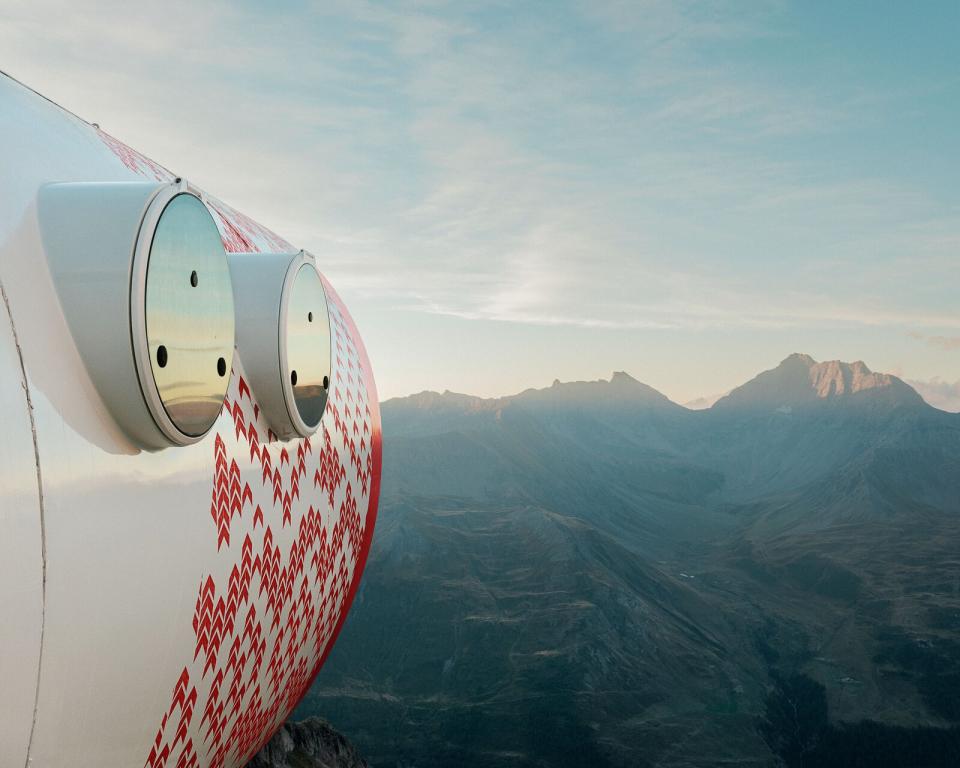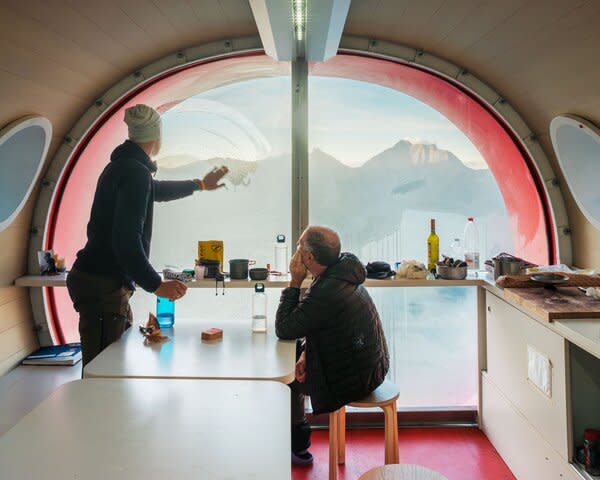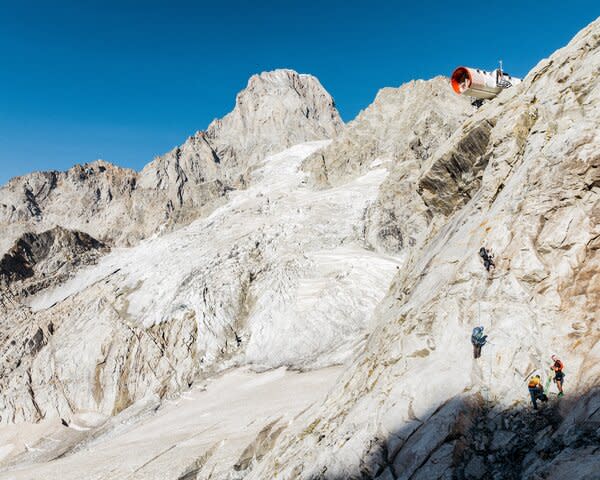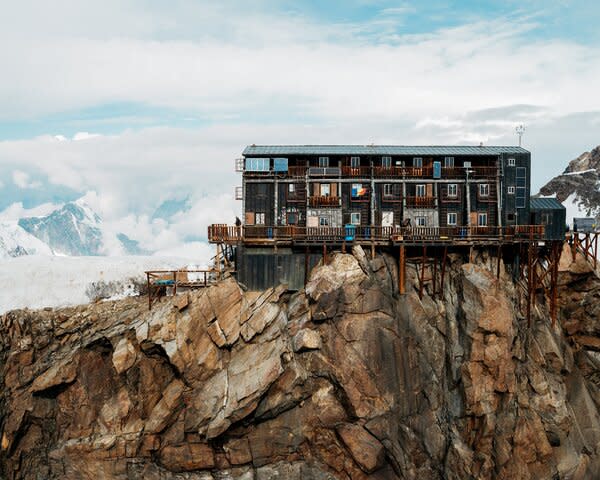The Italian Huts Where Mountaineering Was Born
Inside a new generation of hiking cabins in the Val d’Aosta lies the past, present, and future of mankind’s relationship with Earth’s highest heights.

At the top of a steep trail that rises swiftly from an alpine valley with almost no switchbacks or other relief from the pitch, past scrubby trees and boulders, past wild blueberries and flowers, up two cliffs, over one snowfield, and across, repeatedly, a frigid meltwater stream that cascades off the side of the mountain, sits a small alpine hut called Bivacco Giusto Gervasutti, used mostly by mountaineers on their way to the peaks beyond.
Located in the northwest of Italy, Val d’Aosta is the country’s smallest, least populous, and most mountainous region—and it has over 3,100 miles of public hiking trails and even more miles of mountaineering routes. Bordered by France to the west, Switzerland to the north, and the Piedmont region to the south and east, Val d’Aosta is home to many of the highest and most forbidding peaks in Europe, including Mont Blanc, and Courmayeur, the picturesque resort town widely regarded as the birthplace of mountaineering and alpine tourism.
The Mont Blanc massif straddles the border between France and Italy, and as I set out with alpine guide David Pellissier and photographer Benjamin Rasmussen, my route snakes up the Italian side of the range. It is a hot August afternoon, and we start from the idyllic green ribbon of Val Ferret. Far above loom the black, granite, sawtooth peaks of Grandes Jorasses, one of the massif’s assemblages of several four-thousanders, or summits exceeding 4,000 meters (around 13,100 feet). David, who is 56, has been guiding clients in the Alps for more than 25 years. He moves his feet as a pianist moves his fingers. Ben—laden with photography equipment—and I are considerably less elegant than our guide, who appears to have never been short of breath in his life.
Suddenly, as we near the hut, the Fréboudze glacier swings into view. The beauty of its fluted, blue-and-gray face is transfixing. The glacier is streaked with traces of the black granite it has crushed in its ancient descent, like dough under a rolling pin. Glaciers here, as everywhere, are disappearing; the Alps are warming faster than just about any other place on Earth. The mountains have always been where we can confront our finitude and nature’s eternality, but looking at this river of ice that carved itself into the mountain I’m standing on, I’m dismayingly conscious of its fragility.
It’s evening, and we’ve been walking uphill for about four hours when we reach Gervasutti, peeking over a rocky ledge above the glacier. Shaped like a section of tube, with a row of porthole windows on each side, the hut recalls an airplane fuselage resting on a precipice. Gervasutti is one of a small but growing number of modern backcountry huts in Val d’Aosta that, in contrast to older huts, embrace their stunning settings and provide users with new comfort and functionality. These new off-grid, first-come-first-served overnight shelters—there are nearly 10 of them—are publicly accessible via trails and maintained on a volunteer basis, mostly by their users. From a design perspective, these huts, like more than 20 others that have been built in recent years across the seven Alpine countries, represent perhaps the most fertile period in backcountry hut design since the invention of hiking.
See the full story on Dwell.com: The Italian Huts Where Mountaineering Was Born
Related stories:




